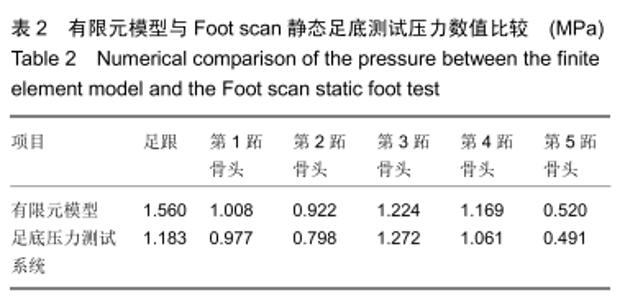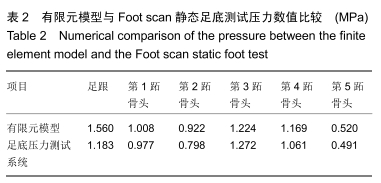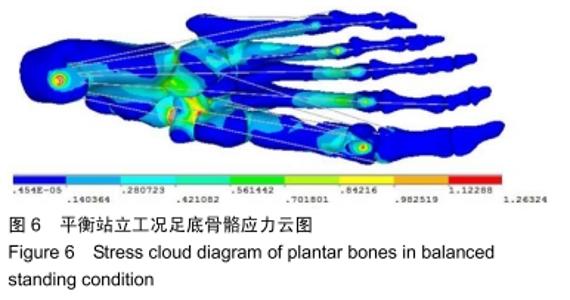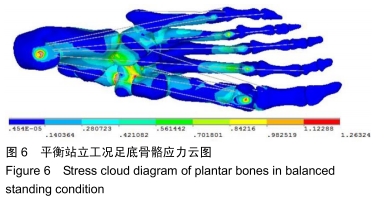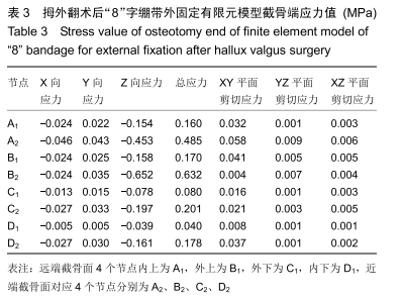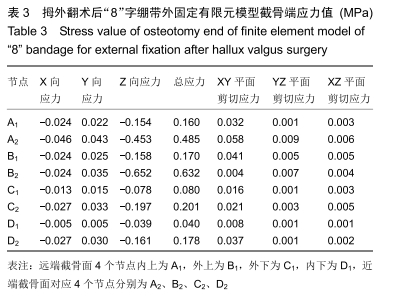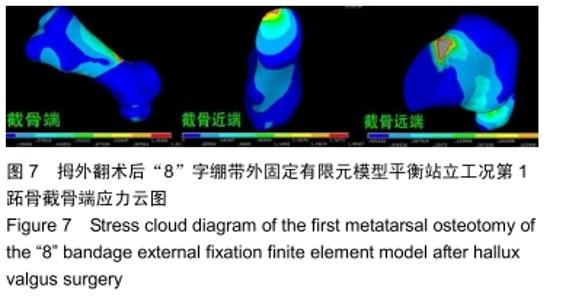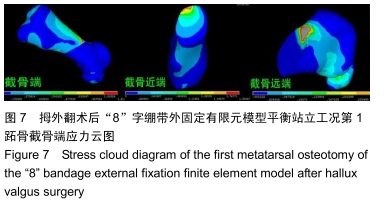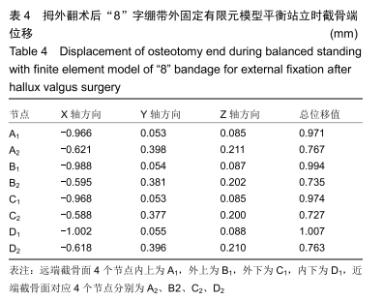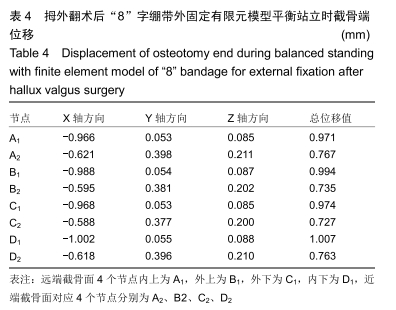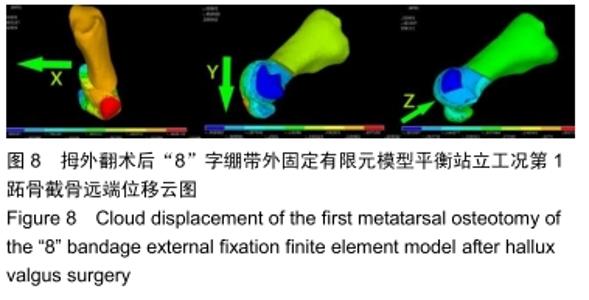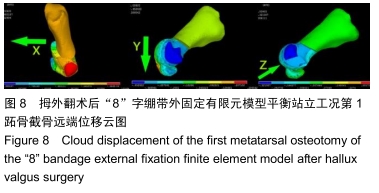[1] 王爽,赵延勇,韩景健.微创手术治疗拇外翻畸形的进展[J].中国美容整形外科杂志,2018,29(2):122-124.
[2] 孙卫东,温建民.微创截骨治疗拇趾外翻稳定与愈合原理分析[J].中国骨伤,2016,29(3):228-231.
[3] 李晏乐,常程,岳肖华,等.拇外翻微创截骨联合“8”字绷带外固定的生物力学分析[J].中国组织工程研究,2018,22(23): 3659-3664.
[4] FUNK JR, HALL GW, CRANDALL JR, et al. Linear and quasi-linear vis coelastic characterization of ankle ligaments.J Biomech Eng.2000;122(1):15-22.
[5] CHEN WP, TANG FT, JU CW. Stress distribution of the foot during mid-stance to push-off in barefoot gait: a 3-D finite element analysis.Clin Biomech (Bristol, Avon). 2001;16(7): 614-620.
[6] GEFEN A. Stress analysis of the standing foot following surgical plantar fascia release.J Biomech.2002;35:629-637.
[7] BUCHLER P, RAMANIRAKA NA, RAKOTOMANANA LR, et al. A finite element model of the shoulder:application to the comparison of normal and osteoarthritic joints.Clin Biomech. 2002;17:630-639.
[8] ERDEMIR A, SAUCERMAN JJ, LEMMON D, et al. Local plantar pressure relief in therapeutic footwear: design guidelines from finite element models.J Biomech. 2005; 38(9):1798-1806.
[9] 徐志庆,刘云鹏,华国军,等.前踝撞击征发生机制的生物力学有限元分析[J].中国矫形外科杂志,2017,25(14):1303-1307.
[10] 吴恺,杨茂伟,都承斐.人体足踝部有限元模型的建立及有效性分析[J].中国骨与关节外科,2012,5(4):352-356.
[11] 张占阅,董乐乐,左强,等.有限元分析法在拇外翻生物力学研究中的应用:可靠性与提升空间[J].中国组织工程研究,2018,22(11): 1762-1767.
[12] MORALES-ORCAJO E, BAYOD J, DE LAS CASAS EB. Computational foot modeling: Scope and applications.Arch Comput Method E.2016;188(3):389-416.
[13] 周宇宁,张宏,陈相春,等.建立足部三维有限元数字模型[J].中国组织工程研究,2015,19(5):662-666.
[14] 白子兴,李晏乐,曹旭含,等.拇外翻有限元模型:研究进展及未来方向[J].生物医学工程与临床,2019,23(5):607-612.
[15] 李云婷,陶凯,王冬梅,等.足底软组织硬化对足部生物力学性能影响的三维有限元分析[J].医用生物力学,2009,24(3):169-173.
[16] HE K, FU S, LIU S, et al. Comparison sinfinite element analysis of minimally invasive,locking,and non-locking plates systems used in treating calcaneal fractures of Sanders typeII and typeIII.Chin Med J.2014;127(22):3894-3901.
[17] 刘颖,周思远,郑拥军,等.基于有限元分析腓肠肌作用力对足部生物力学的影响[J].医用生物力学,2016,31(5):437-442.
[18] BOTTLANG M, FITZPATRICK DC, SHEERIN D, et al. Dynamic fixation of distal femur fractures using far cortical locking screws:a prospective observational study.J Orthop Trauma. 2014;28(4):181-188.
[19] 孙卫东,温建民.足部有限元建模方法应用现状[J].中国组织工程研究与临床康复,2010,14(13):2457-2461.
[20] CHEUNG JT, ZHANG M, LEUNG AK, et al. Three-dimensional finite element analysis of the foot during standing-a material sensitivity study.J Biomech.2005;38(5): 1045-1054.
[21] LUCATTELLI G, CATANI O, SERGIO F, et al. Preliminary Experience With a Minimally Invasive Technique for Hallux Valgus Correction With No Fixation.Foot Ankle Int. 2019: 1071100719868725.
[22] KADAKIA AR, SMEREK JP, MYERSON MS. Radiographic results after percutaneous distal metatarsal osteotomy for correction of hallux valgus deformity.Foot Ankle Int. 2007; 28(3):355360.
[23] CHAN CX, GAN JZ, CHONG HC, et al. Two year outcomes of minimally invasive hallux valgus surgery.Foot Ankle Surg. 2019;25(2):119126.
[24] MALAGELADA F, SAHIRAD C, DALMAU-PASTOR M, et al. Minimally invasive surgery for hallux valgus: a systematic review of current surgical techniques.Int Orthop. 2019;43(3): 625637.
[25] 常程,乔治,温冠楠,等.拇外翻术后行“裹帘法”外固定对截骨端稳定性的影响[J].中华中医药杂志,2017,32(5):2325-2328.
[26] 毕春强,温建民,桑志成,等.拇外翻截骨矫形“裹帘”法外固定后截骨端稳定性的X线研究[J].中医正骨,2016,28(3):5-8.
[27] 徐振东,刘曦明,蔡贤华,等.LCP“动力化”一折端微动及应力的有限元分析[J].中国矫形外科杂志,2017,25(8):747-751.
[28] 靳文阔,何伟,蔡雅楠,等.Weil截骨术治疗足拇外翻小切口术后转移性跖痛症[J].中国骨与关节损伤杂志,2018,33(10):1106-1107.
|
